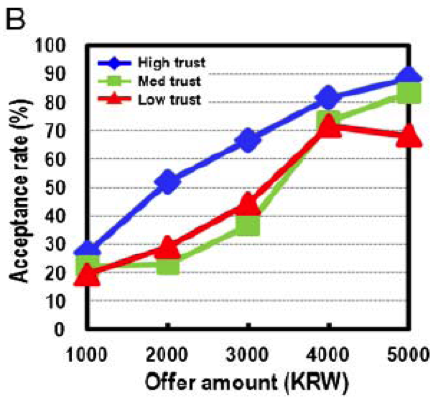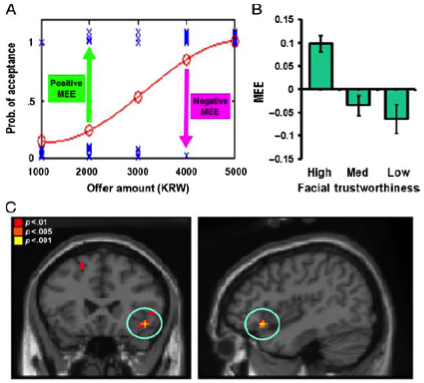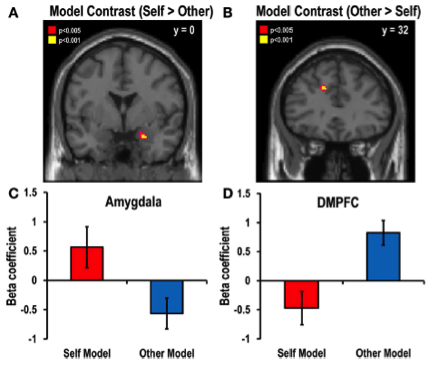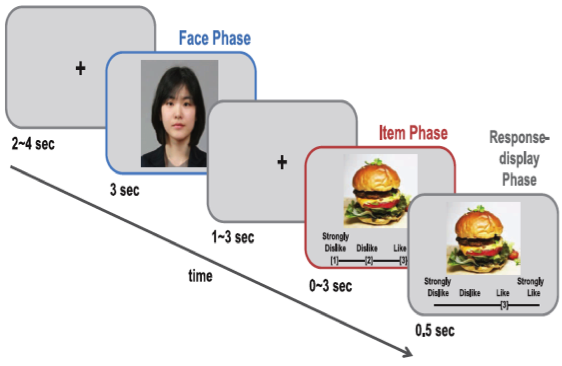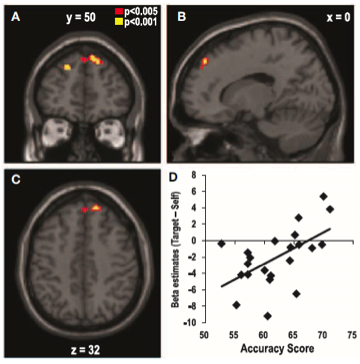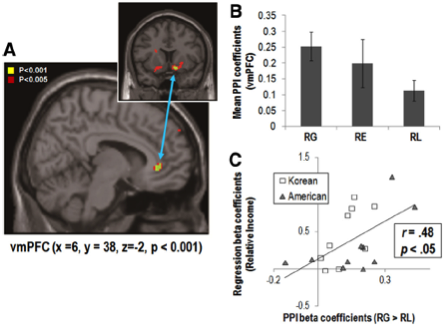Preference judgments of one over other options form the basis of various types of decision-making and can be often formed rapidly without conscious efforts.
We have revealed that the nucleus accumbens (NAC) and the medial orbitofrontal cortex (mOFC), two key brain regions implicated in reward processing, are involved in preference judgment when choosing between two face stimuli. In addition, we found that NAC can rapidly and automatically respond to preferred faces whereas mOFC responds to preferred faces more slowly and consciously. (Kim et al., PNAS, 2007)





